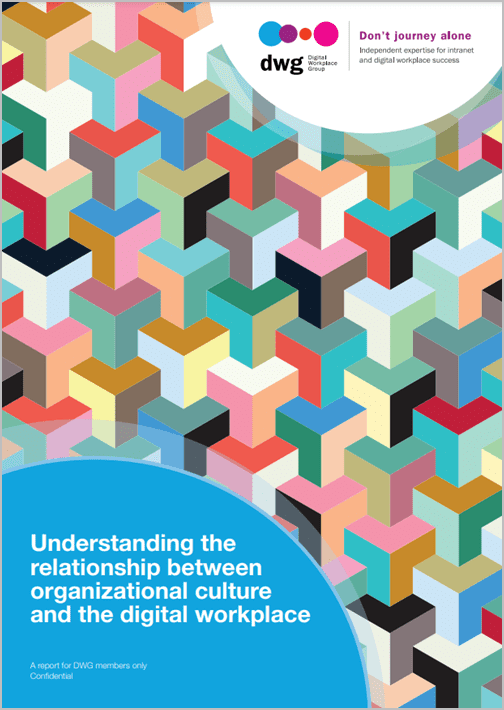Understanding the relationship between organizational culture and the digital workplace
DWG’s new research note “Understanding the relationship between organizational culture and the digital workplace” examines the complex influence of organizational culture on the digital workplace and vice versa.
Cultural values can have a major impact on the success, or failure, of a digital workplace programme. In a recent analysis of DWG’s extensive intranet benchmarking data, we found unequivocal evidence that organizational culture correlates strongly to performance in many other areas of intranet practice including collaboration and knowledge sharing, employee involvement, and security and risk management.
This research note, which is partly derived from two earlier blog posts, focuses on the elements of culture that intranet and digital workplace professionals need to consider as part of their wider programme. It is intended as a starting point for intranet and digital workplace practitioners seeking specific guidance around the relationship of culture to their work.
The research methodology has included a review of the relevant academic literature on culture, the main frameworks and theories for understanding culture, recent DWG video and meeting resources, as well as interviews with experts on the DWG team.
Cost
An excerpt of this report is available as a free download. Please refer to the DWG Research Terms & Conditions of Usage before downloading.
Need help?
For general inquiries: nancy.goebel@digitalworkplacegroup.com or telephone +44 (0) 20 7374 8061.
About DWG research
The Digital Workplace Group (DWG) carries out research into best practice in intranet and portal deployment. Covering the hottest topics in the intranet world, the studies we undertake are rooted in practical examples from among DWG member organizations as well as leading non-member companies. The results of this in-depth research act as a basis for decision-making, a source of ideas, and the basis for rich interactions between participants at DWG meetings. Generally, members are given exclusive access to our findings, although we do from time to time make a report available to non-members.
